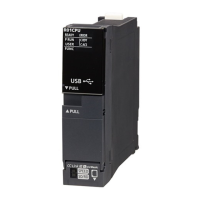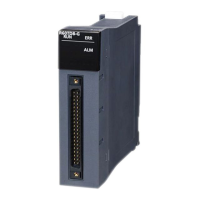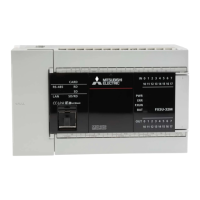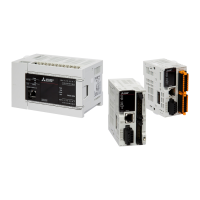424
6 BASIC INSTRUCTIONS
6.6 Data Conversion Instructions
Converting 32-bit unsigned binary data to 32-bit signed binary
data
UDINT2DINT(P)
These instructions convert the specified 32-bit unsigned binary data to 32-bit signed binary data.
*1 The engineering tool with version "1.035M" or later supports the ST.
■Execution condition
■Description, range, data type
■Applicable devices
The UDINT2DINT(P) instruction is used in programming using labels. The purpose of using this instruction is
to match the data type of the specified label with the data type that can be specified by the instruction
operand.
In programming using devices, use of the UDINT2DINT(P) instruction is not required.
Ladder ST
*1
ENO:=UDINT2DINT(EN,s,d);
ENO:=UDINT2DINTP(EN,s,d);
FBD/LD
Instruction Execution condition
UDINT2DINT
UDINT2DINTP
Operand Description Range Data type Data type (label)
(s) Binary data or the label where the binary data is stored 0 to 4294967295 32-bit unsigned binary ANY32_U
(d) Label for storing the converted binary data 32-bit signed binary ANY32_S
EN Execution condition Bit BOOL
ENO Execution result Bit BOOL
Operand Bit Word Double word Indirect
specification
Constant Others
X, Y, M, L,
SM, F, B, SB,
FX, FY
J\ T, ST, C, D, W,
SD, SW, FD, R,
ZR, RD
U\G, J\,
U3E\(H)G
Z LT, LST,
LC
LZ K, H E $
(s)
(d)
RnCPU
RnENCPU
RnSFCPU RnSFCPURnPCPURnPCPU
(Standard) (Safety)
(Redundant)
(Process)

